A regular day tour to the Brecks today. It was very windy, gusting over 50mph at times, which didn’t help us, but at least it stayed dry all day and there were even some sunny intervals at times.
The forecast was for it to be brightest and least windy first thing, so we decided to try for Woodlark initially. As we walked in along a ride, we could hear one singing but it was already very breezy and we couldn’t see where it was. It seemed to be either in the trees of low over the tops out of view. We decided to try again on our way back.
A Stonechat was chatting over by the railway line and one or two Siskins flew back and forth overhead calling, but otherwise it was quiet as we made our way round via the reedbed and down to the river. It had been relatively sheltered in the lee of the pines but the poplars were exposed to the full force of the wind and were bending and creaking. The early sun disappeared behind some thick clouds too, which was not what we had been promised.
There was very little activity in the trees here today – just a few Stock Doves and a couple of Jackdaws – as we walked down the path. There was no sight or sound of any woodpeckers today. A Sparrowhawk appeared overhead, over the tops of the poplars. We could see it was noticeably patterned below and rather dark grey above as it banked, with a long narrow tail, square-ended and noticeably pinched-in at the base. A Crossbill flew over the river calling but disappeared behind the trees.
A Grey Wagtail called and we looked over to see it flitting around the tangle of branches where a tree had fallen into the river. It flew down onto the floating vegetation which had been trapped there and started to look for food.

We carried on down along the path and found a Chiffchaff singing in the willows by the reeds. It was flitting around in the branches which were now covered in catkins, so it was tricky to see at times. Beyond this point, the path started to get rather muddy, so we decided to turn round and head back.
When we got back half way we met a couple of people who told us they had earlier seen one of the Lesser Spotted Woodpeckers in the alders on the other side of the river. There was certainly a lot more activity here, where it was a little more sheltered. We stopped to look and could see lots of Siskins feeding in the trees. There was a mixed group of tits here too – Long-tailed Tits, Blue Tits and a Coal Tit. A Marsh Tit appeared with them. A Treecreeper worked its way up the trunks of a multi-stemmed tree and a pair of Nuthatches flew in to the tops. But there was no more sign of the woodpecker – it really wasn’t good weather for looking for them today.
As we made our way back to the van, a Woodlark flew up from the clearing. It didn’t really break into song, but gave us a brief few phrases before flying off over the trees. We hadn’t gone much further when it flew back in again and hovered overhead, singing rather half-heartedly again. We could see its distinctive short tail and broad, rounded wings, before it landed in the clearing back behind us.
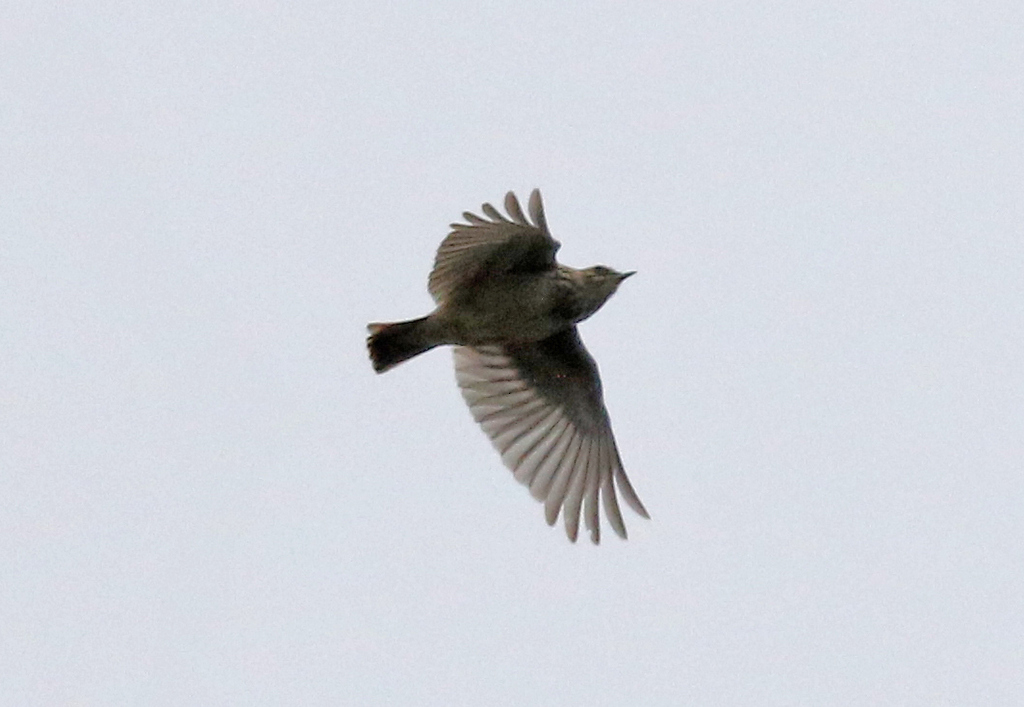
We walked back and got the Woodlark in the scope. We had a really good look at it, as it walked around in the short grass and heather. It boldly marked supercilium stood out, the two sides meeting in a shallow ‘v’ at the back, noticeable as it worked its way away from us. It was the male and we could see its bright rusty ear coverts too.
The sky was clearing again from the west and we could see a large area of blue sky approaching, so we decided this would be a good opportunity to try our luck with Goshawks. We drove over to a high point overlooking the forest and got out to scan. It was very exposed here and the wind was really whistling through now. The scopes wouldn’t stand up, so we had to stand in the lee of the van! Our timing was spot on though, as we had not even had time to get set up properly when we spotted our first Goshawk up.
Over the next 40 minutes or so, the Goshawks were up fairly regularly, at least two (we saw two up together) and probably at least three different individuals. They were trying to display, although it looked to be difficult in the wind. The first Goshawk had its white undertail coverts fluffed out and wrapped round the sides of its tail, so it almost looked white rumped as it banked. It seemed to be doing a slow flapping display, but it was hard to tell as it was struggling to hold a level course.
Later a Goshawk came in high over the trees and we saw what was probably the same one we had seen earlier doing a quick burst of slow flapping display. It was flying with exaggerated, deep wingbeats, until it turned across the wind it was suddenly swept away. Still, we had good views of the Goshawks while they flew round. They were adults, noticeably pale silvery grey above and appeared almost pure white below, very different from the Sparrowhawk we had seen earlier.
There were several Common Buzzards up too. They seemed to be enjoying the wind, swooping at each other and hanging almost effortlessly in the air at times.
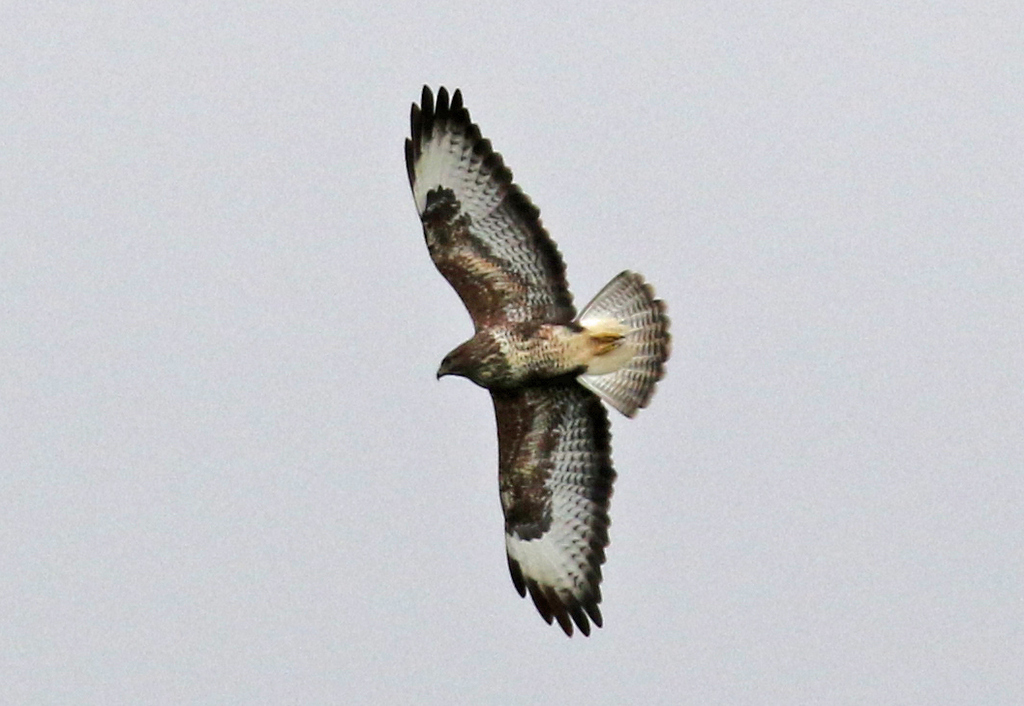
Having had good views of the Goshawks, we decided to move on somewhere more sheltered. It was time for lunch, so we headed down to Brandon where we could make use of the picnic tables and get a hot drink.
Being a Saturday, it was a bit busier here today, and there weren’t as many birds coming to the feeders. There was a steady succession of tits – Blue, Great, Long-tailed and Coal Tits – and regular visits from several Siskins, but no sign of any Bramblings coming in here today.
After lunch, we had a quick walk down to the lake. There was no sign of any Mandarin today, and we couldn’t even hear the Firecrest. It was possibly just too windy in the trees for it to be singing here today. We did find a Treecreeper in the edge of the trees – a bonus for those who had missed the one we had seen earlier. As we walked back to the van, we realised where the Bramblings were, as we flushed them from the leaves under the trees where they looked to be feeding on the beech mast.
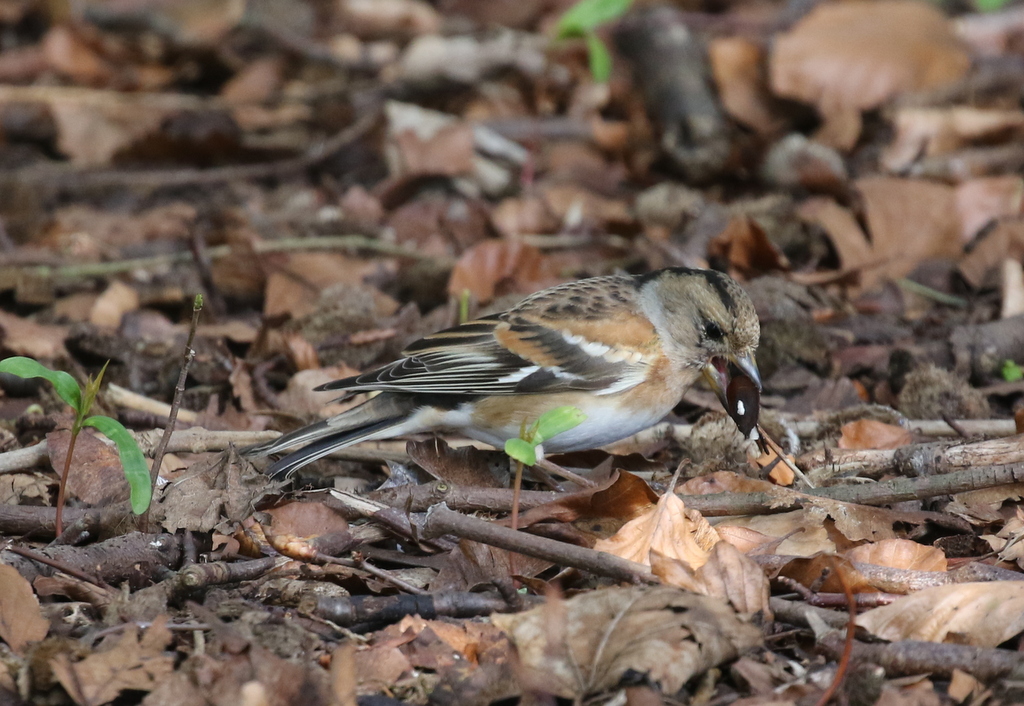
The Great Grey Shrike had been reported again back in its favoured clearing yesterday and it was apparently still there this morning, so we made our way over there next to look for it. As we walked in along the ride, there was no sign of the large numbers of finches which have been feeding in the pines here in recent days. Whether they have moved on or were just feeding elsewhere out of the wind remains to be seen. So we made our way quickly down to the clearing at the far end.
There were a couple of people walking back who told us the Great Grey Shrike had been seen recently, after a three hour absence, but when we got to the clearing there was no sign of it at first. We were hoping we would not have to wait three hours for it to appear again!
A pair of Stonechats were perched on the fence and a couple of Linnets flew in and landed on the sandy track. As we walked down along the side of the clearing a pair of Woodlarks flew in calling. The female flew straight down into the long grass in the middle but the male landed on the fence for a few seconds before dropping down to join here. Two Crossbills flew over the clearing calling, but disappeared straight off over the pines.
Some more people who were walking back from the far side told us they had seen the Great Grey Shrike fly out into the middle of the clearing about ten minutes ago, but they had lost sight of it. While we stood talking to them, we looked over to the far side and realised we could just see the head of the shrike tucked down in the grass, as the wind blew the vegetation from side to side. Even through the scope, it was very difficult to see but then it helpfully flew up and landed in the top of a taller birch sapling where we could get a good look at it.
The Great Grey Shrike flew back down to where it had been – presumably it was sheltered from the wind down there. We walked a bit further up and found a spot where we could see it better, looking down between the rows of young pines. Now we could get a clear view of its black mask, very pale silvery grey upperparts and white underparts, and black wings and long black tail.
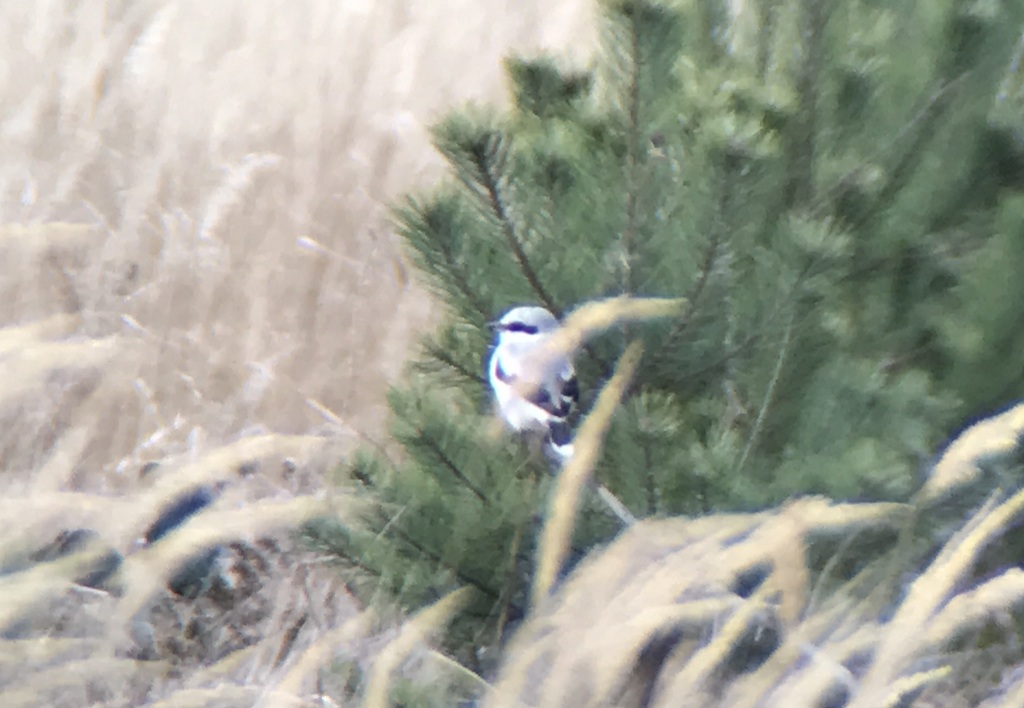
By the time we had walked all the way back to the van, we were a little later getting away than we had hoped, which meant we were later than planned arriving at Lynford Arboretum, where we would finish the day. As we walked out of the car park, we could hear a Firecrest singing but by the time we got round onto the road where it had been it had gone quiet again.
We had a quick look in the larches but there was no sign of any Crossbills here now, so we carried on to the gate. It seemed a bit quiet here at first, but gradually more birds started to drop down out of the trees to feed on the ground amongst the leaves. The surprise was the number of Yellowhammers – we counted at least ten here together at one point. There were still a few Bramblings too, with several smart males sporting black heads to a greater or lesser degree, but not as many as there have been here recently.
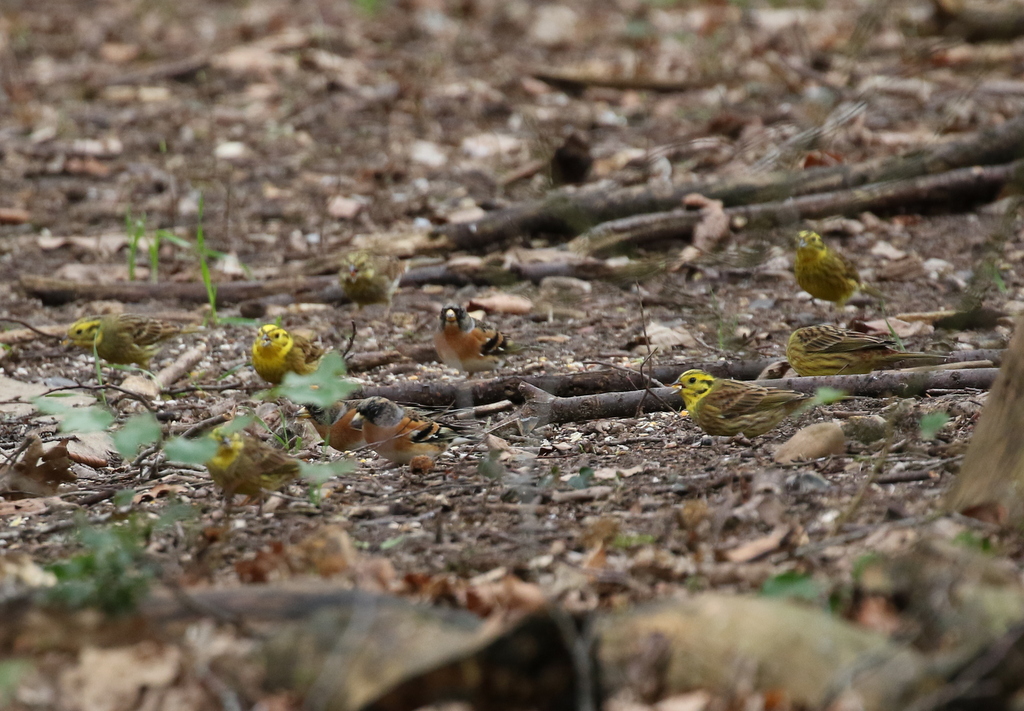
As time was likely to be of the essence on a cold, windy afternoon, we didn’t hang around too long and carried on down towards the bridge. We couldn’t resist a quick stop to look at the Tawny Owl, which was back roosting in its usual spot high in one of the fir trees. It was hard to see, even when it was practically filling the view in the scope, until you realised there was a large eye staring back down at you!
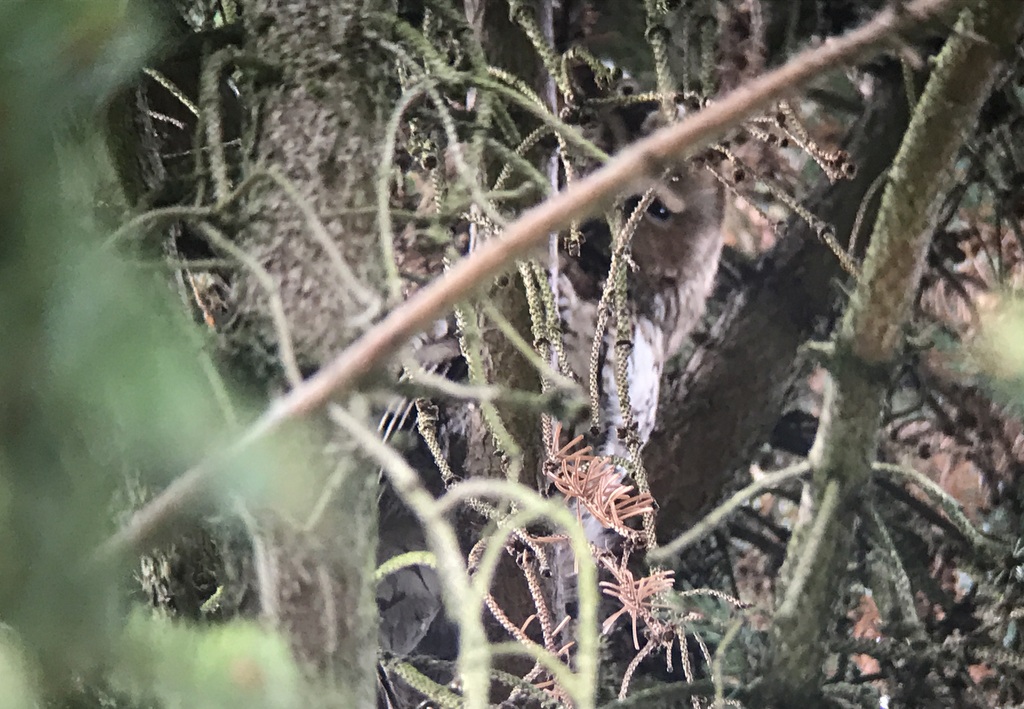
There were lots of photographers standing on the other side of the bridge, waiting for Crossbills to come down to drink. They had been in and out earlier, but there was no sign of any now, so we continued straight on to the paddocks. There had apparently been some Hawfinches here earlier, but they had flown off before we got there. There were a few Redwings flying around the trees in the middle, and a Marsh Tit singing in the hedge in front of us, but otherwise it all seemed fairly quiet now.
The Hawfinches can sometimes be found in the tops of the pines at the end of the day, but it didn’t sound like they had flown in that direction today. We looked across and the tops of the trees were swaying vigorously from side to side in the wind. It didn’t look like they would be perching up there this afternoon! The bottom of the trees that side would be sheltered from the wind, so we walked round there anyway to see if we could spot any in the lower branches. There was no sign of them there, but we did find a Firecrest singing. This one posed nicely, flitting around in the branches of a bare tree above our heads.

We made our way back round the other side and along by the lake. There were a few Gadwall and Mallard, plus a pair each of Canada and Greylag Goose. One or two Little Grebes were busy diving. One of the group spotted a pair of Common Crossbills perched in the top of one of the alders above the path. We got the scope on the red male and had a good look at it before they flew off. Nice to finally get to see one perched rather than just flying over.
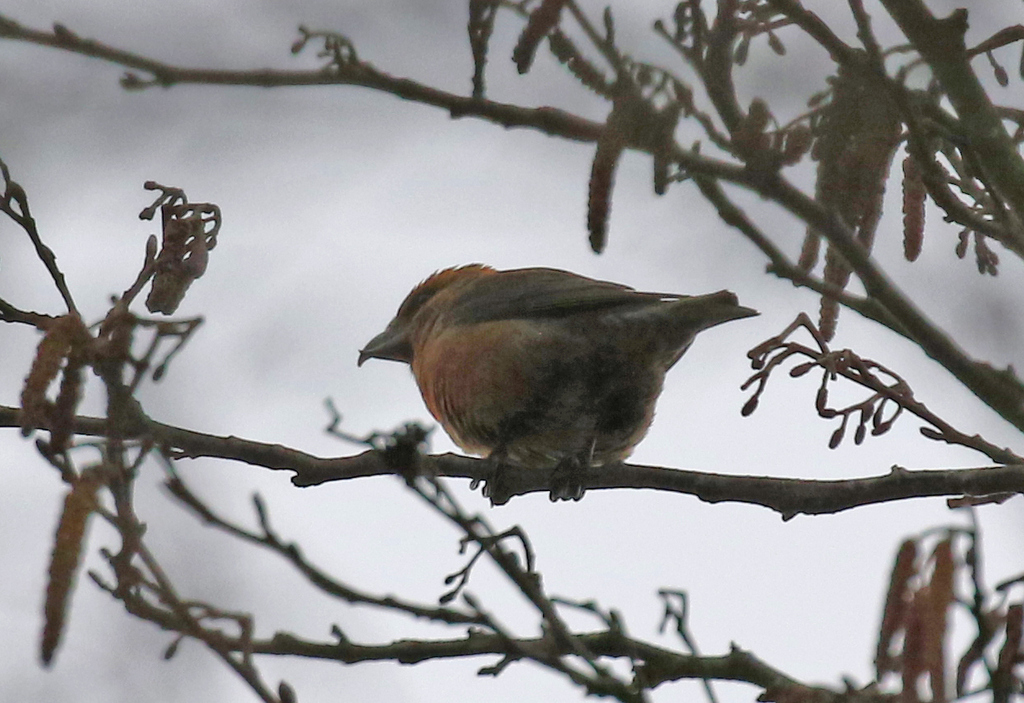
Back at the bridge, we heard a couple more Common Crossbills calling in the trees but there was no sign of any coming down to drink now. There were lots of birds coming and going from the feeders and the seed put out on the pillars though. We stopped and watched for a bit, with a good variety of tits including some very close Long-tailed Tits and Marsh Tits. A couple of Reed Buntings here were a nice late addition to the day’s list.
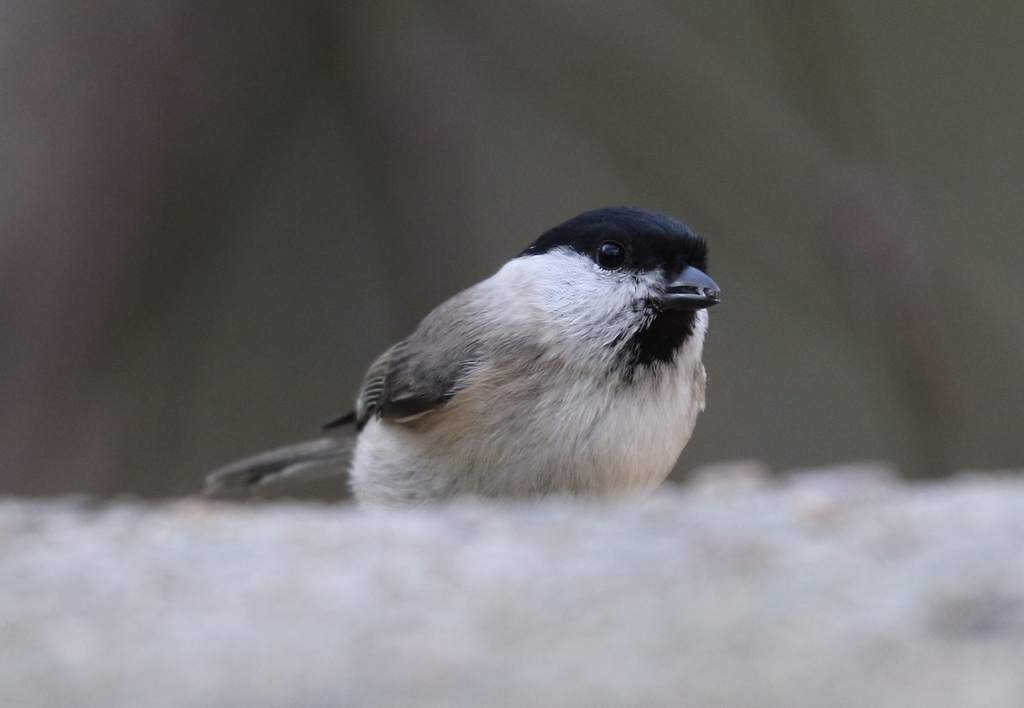
We had another look over at the trees in the paddocks and noticed a large raptor over the pines beyond, a Goshawk. It circled for a minute and then folded its wings and plunged vertically down into the trees. A short while later it reappeared above the trees and we watched it flying off to the south.
It was getting late now, so we started to walk back to the car park. The ground beneath the feeders from the gate was quiet now but as we got back to the larches by the entrance, we noticed a bird high in the top of one of them. It was a Common Crossbill, another smart red male. We got it in the scope and watched it perched there preening for several minutes. Then it flew off into the Arboretum.
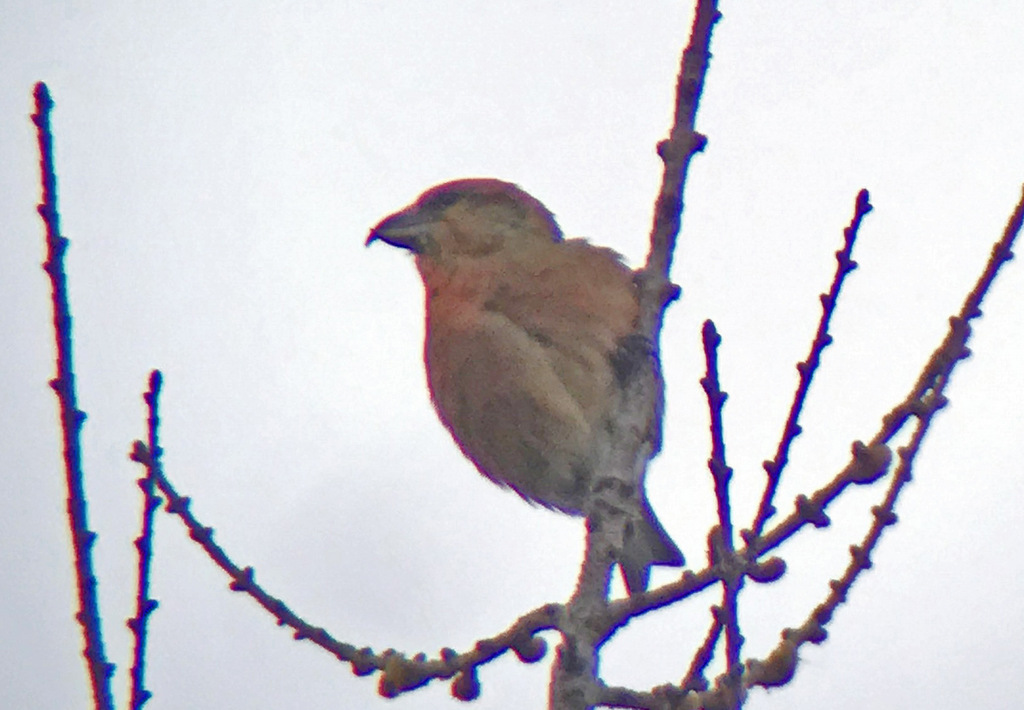
That was a nice way to finish the day. It had been challenging at times in the wind, but we had seen a remarkable amount today considering the conditions.
















